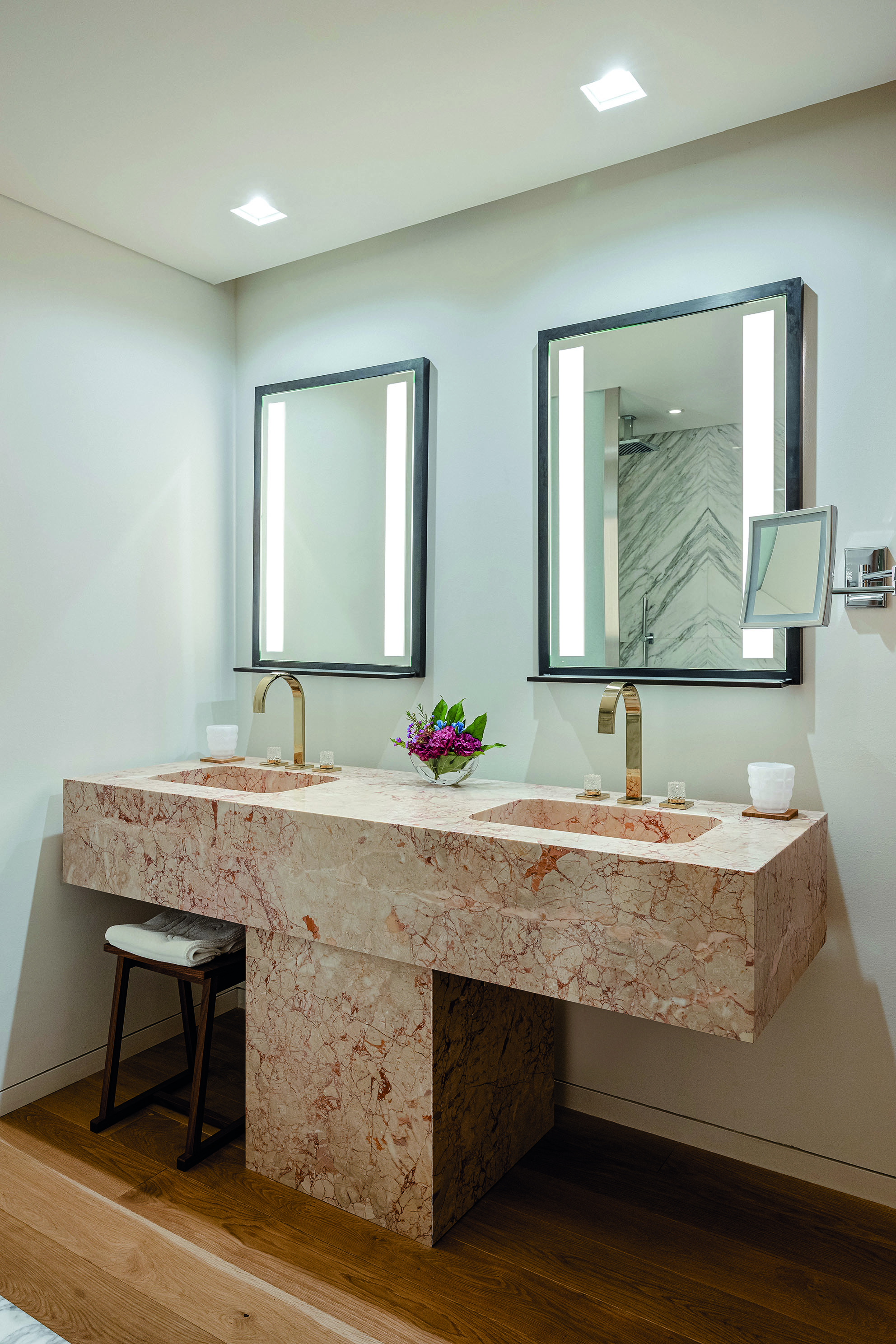Superbly located, this discreet new property from hotelier Paddy McKillen and architect Tadao Ando opened quietly in December 2021. But now, with Japan open and the unveiling of its signature restaurant, Jean-Georges at The Shinmonzen, due on 15 March, it’s time to discover Gion’s newest best-kept secret, says Kate Crockett.
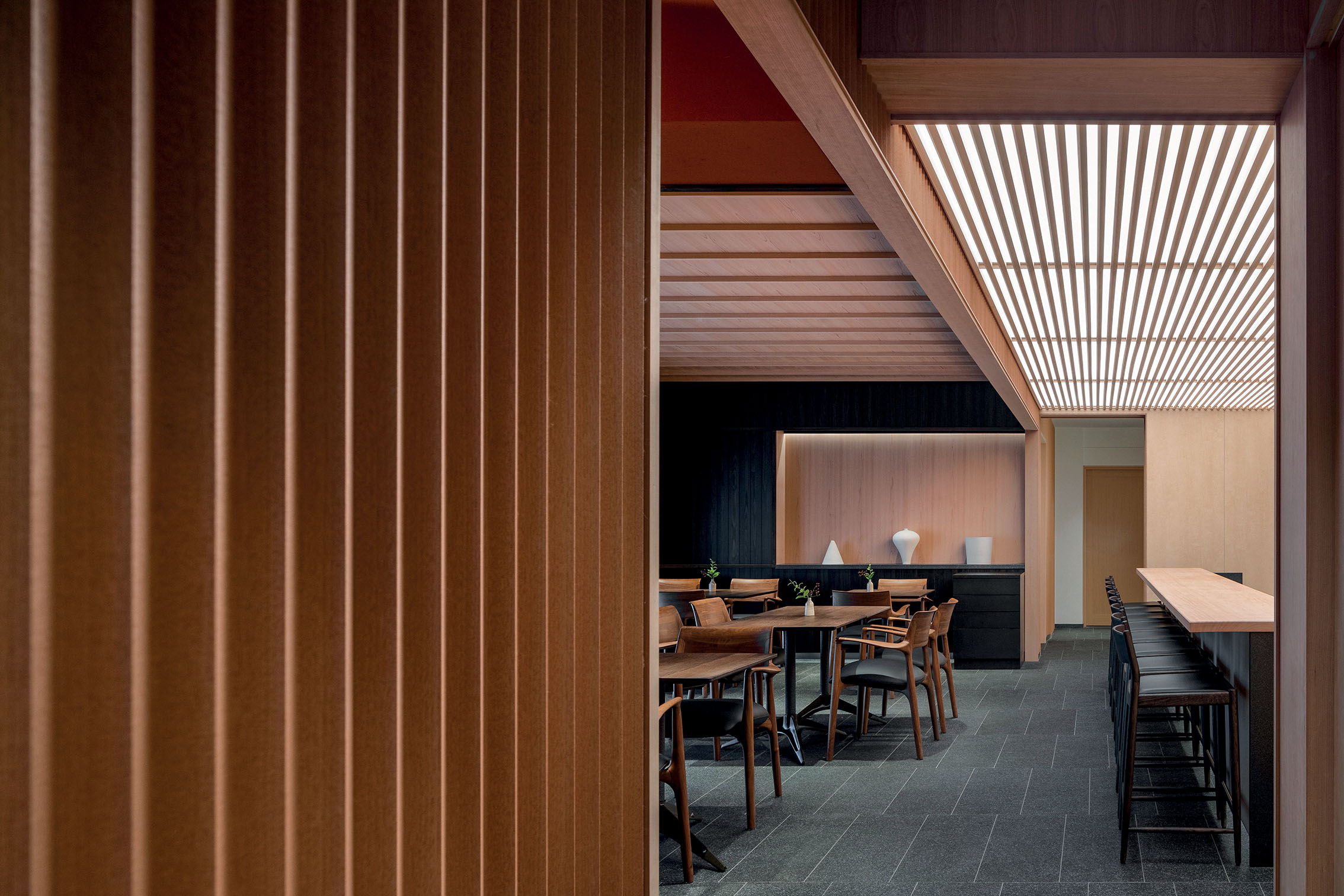
It pays to know what one is looking for in Japan’s ancient capital Kyoto, a city as famous for its hidden worlds as its UNESCO temples and shrines. Nowhere is this more apparent than in the labyrinthine alleyways of Gion, the famous geisha district, where the discreet façades conceal many secrets and delights.
One such delight lies in Shinmonzen Dori, a row of Kyoto townhouses known as ‘The Street of Artists, Fine Arts and Antiques’. Discreetly nestled alongside the exclusive galleries and anonymous Michelin-star restaurants is The Shinmonzen, an intimate, nine-suite luxury hotel which opened in December 2021.
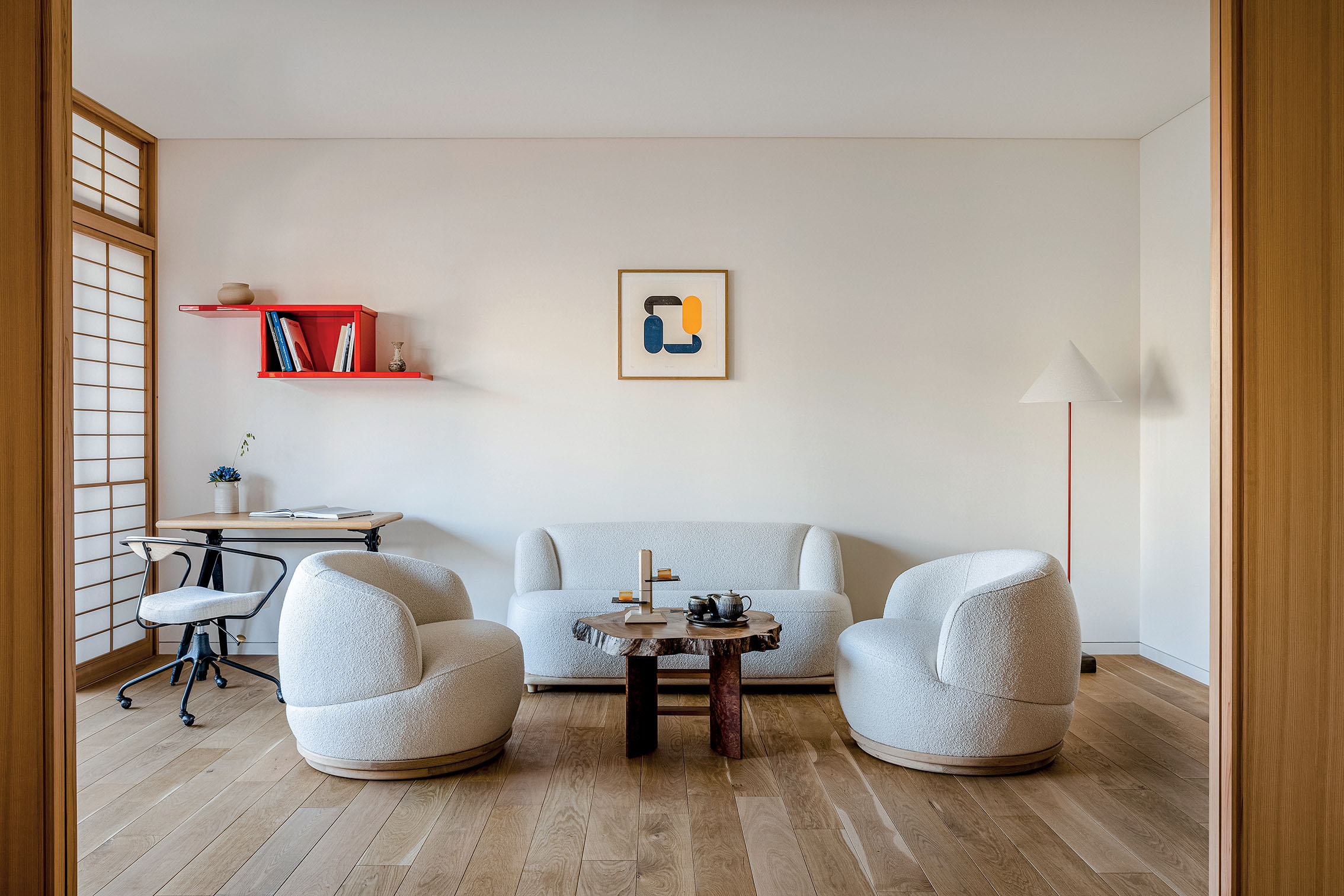
The building’s compact black façade and curving roof tiles have all the hallmarks of a historic Kyoto townhouse, but all is not as it seems. The Shinmonzen is an entirely new property, created over the course of 10 years by hotelier Paddy McKillen and celebrated Japanese architect Tadao Ando, beside Kyoto’s tranquil Shirakawa River, on what was once just an empty parking lot. Designed for the modern traveller, it takes its inspiration from Japanese traditional ryokan inns which are renowned for their highly personalised hospitality.
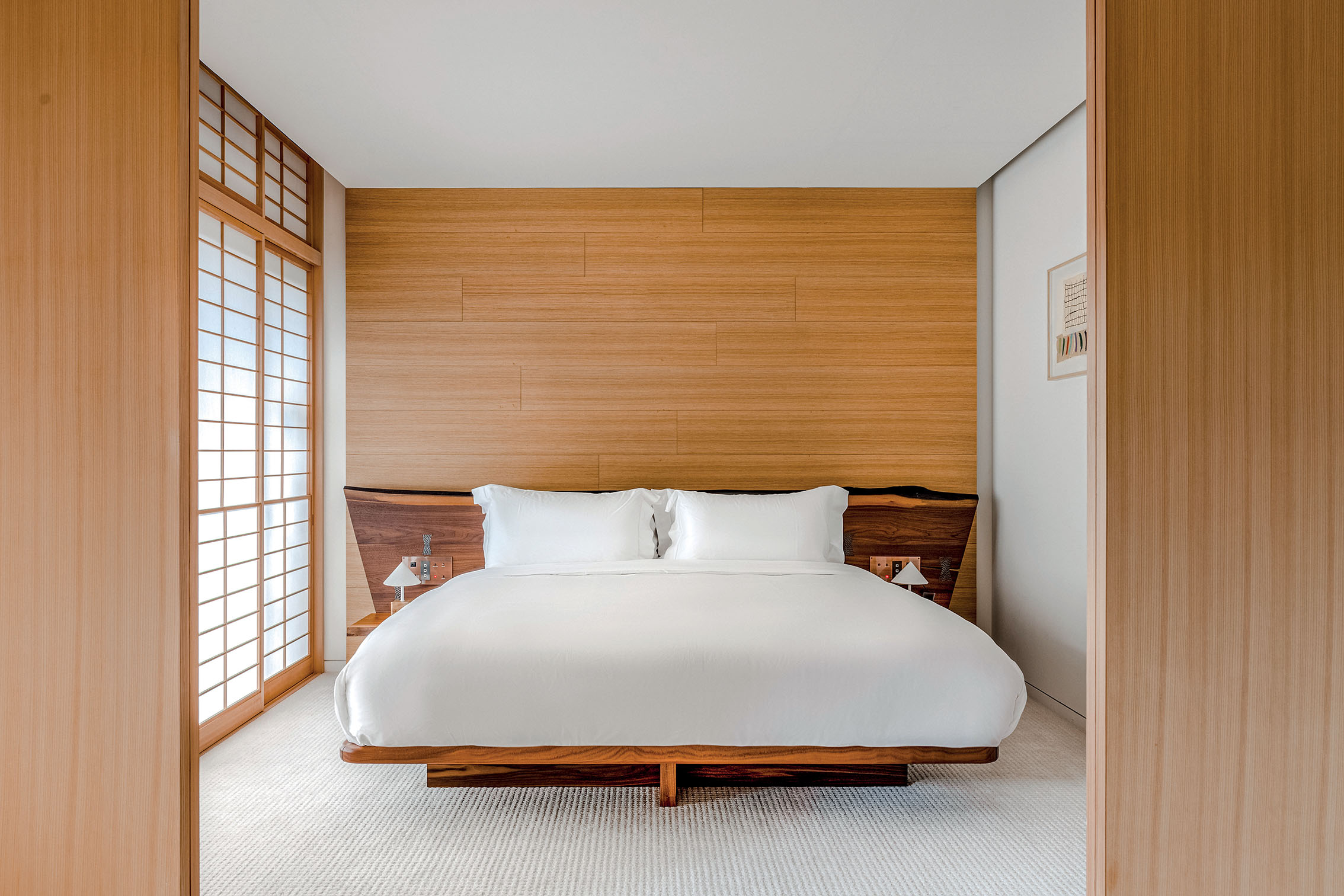
Step behind the split noren curtain, inside the entrance, and The Shinmonzen begins to reveal itself, by way of a long, narrow corridor reminiscent of the toriniwa passageways found in original Kyoto machiya. Clad in wood and Ando’s signature concrete, the corridor takes visitors deep into the hotel, drawn by artist Gen Saratani’s life-size butterfly sculpture, in mother-of-pearl and urushi lacquer, that glistens from its case at the end of the hall.
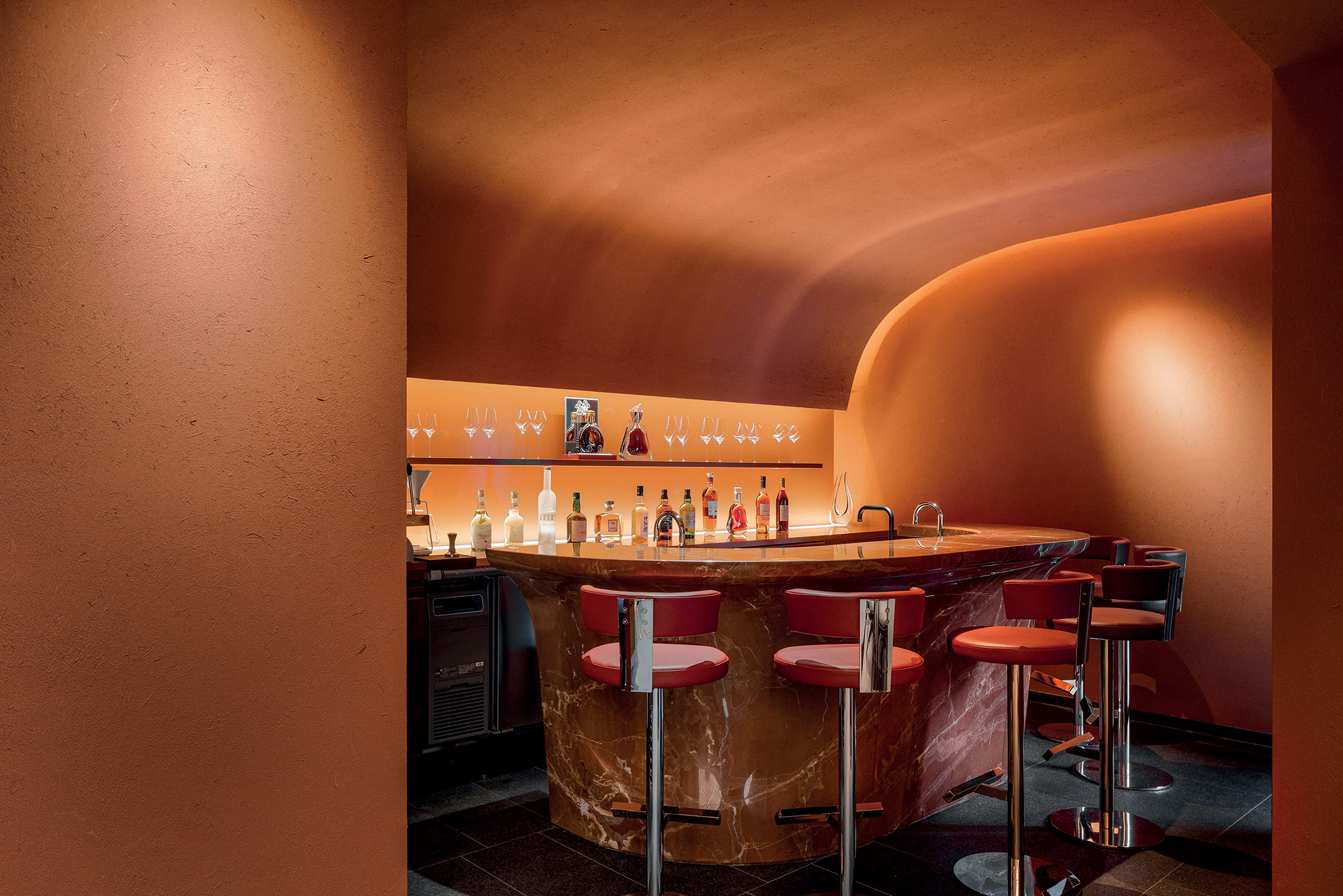
The scale of this Tardis-like property, and greater wealth of artworks, is revealed as one turns into the lobby and adjoining Riverside Lounge. The simple space is adorned with a large canvas from Damian Hirst’s ‘Spot Painting’ series, a duo of works from Louise Bourgeois’s ‘Pregnancy Painting’ series and her Pink Days painting with hand-embroidered signature. There’s a monochrome from Hiroshi Sugimoto’s ‘Diorama’ series, Tulip by Gerhard Richter, ceramics by Edmund De Waal and industrial designer Marc Newson’s Aikuchi Katana Sword, placed dramatically beside the concierge desk. Adjacent, lest one should fail to be sufficiently dazzled, is the guest entrance to the much-anticipated new restaurant, Jean-Georges at The Shinmonzen, which opens on March 15, promising chef Jean-Georges Vongerichten’s world-class cuisine, blending French, American and Asian influences and created with local ingredients.
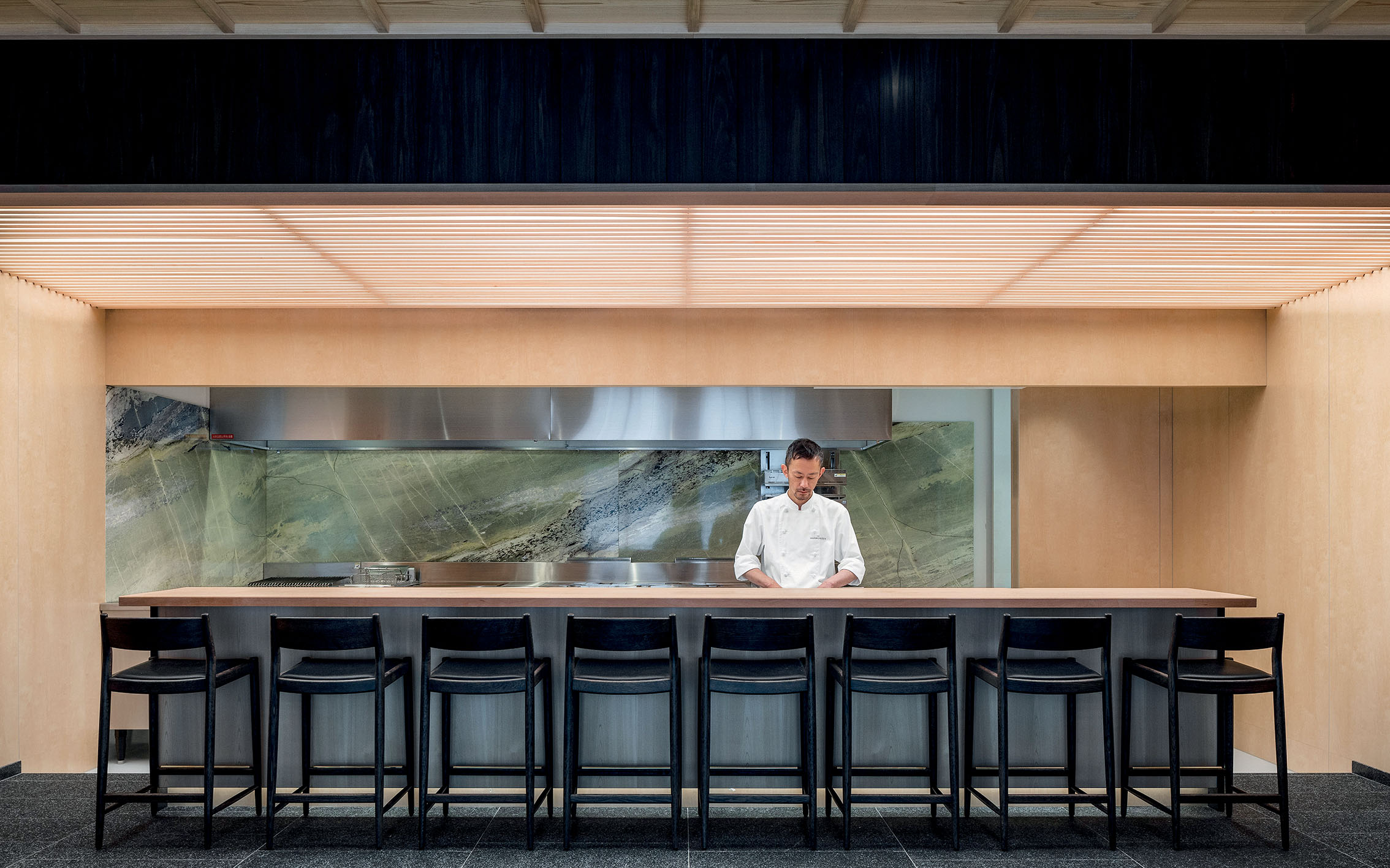
Upstairs, over three floors (the upper two are almost hidden from view from the street), The Shinmonzen’s nine suites range from 40-80sqm; all have private balconies. Each is individually decorated, by interior designer Rémi Tessier, in natural materials including marble, silk and bamboo; there are tatami floors, hand-woven carpets from venerated Japanese textile maker Kawashima Selkon, shoji screens made of washi paper and huge cypress soaking tubs in every bathroom. Rooms have either with Iwata futons or Western-style beds, with naturally hewn sycamore headboards inlaid with elegant butterfly (bow tie) joints by master carpenter Paul Longpre of Longpré. The oak desk, ‘Mesa’ coffee table, sofas and ‘Orbit’ chairs are designed by Darren Chew of District Eight in Ho Chi Minh City. Some of the design details, such as the bathroom stools and Italian marble basins, will be familiar to guests of The Shinmonzen’s sister property, Villa La Coste in Provence. Look out too for the red lacquer ‘Enzo’ chairs on the upper floors, designed by Patrick McKillen himself and made by District Eight. Gracing every floor are striking ikebana displays that sprout from pottery jugs made by master craftsman Nobue Ibaraki.
The artworks continue into the suites: there is embroidery on canvas by Annie Morris, monochrome gelatin silver prints of Kyoto scenes by Rieko Tamura, as well as prints from Mary McCartney’s ‘Geisha’ series and Tadao Ando’s ‘ANDO x ANDO’ series. Plenty of other thoughtful details are here too, such as the pyjamas, slippers and yukata provided for your stay, a pretty wall-mounted pottery vase commissioned from artist Takayuki Watanabe, and in-room ikebana. In the closet are ornate wooden hangers and there’s a quirky bottle opener in the shape of a kokeshi doll inside the generous minibar. Leave your laptop wires trailing and you’ll find them neatly secured with a neat, Shinmonzen-branded leather cable tidy.
The private balconies, with their cafe table and two chairs, are a masterstroke, overlooking as they do the babbling Shirakawa river, draped in maples and pines from neighbouring gardens, and the grey-tiled rooftops of Gion. (Third-floor Suisho suite has the largest balcony, with the addition of sun loungers.) They are the perfect place to enjoy the exquisite Japanese breakfast feast of grilled cod served with myoga ginger, Kyoto white miso soup, soft tofu topped with shaved bonito, pickled Kyoyasai (Kyoto heirloom vegetables), Japanese omelette, fine white rice and natto (fermented soya beans).
It’s very easy to while away the day beside the river, but Kyoto awaits, and The Shinmonzen staff are on hand – at your beck and call, even – to offer private walking tours of the neighbourhood. If you arrived at The Shinmonzen by taxi (complementary chauffeur service is available directly to the hotel from the door of your bullet train at Kyoto station), it is really only once you step out on foot that you appreciate quite how exceptional The Shinmonzen’s location is. No other luxury boutique hotel in the city can boast such an enviable location.
Ducking down an easily missed, narrow alleyway adjacent to the property, one pops out near Tatsumi Shrine and one of Gion’s favourite sweet shops (you’ll know it by the queue). It’s then just a short stroll through the hanamachi (geisha district) – look out for the fans in the window of kimono tailor Matsukawa, bestowed by its geiko and maiko patrons – to the iconic Yasaka pagoda, for that quintessential Kyoto selfie. Venerated Kodai-ji temple and Unesco World Heritage-listed Chion-in and Kiyomizu-dera temples are also within walking distance. There are plenty more alleyways to explore on your return, all sizzling with the potential for a geisha encounter.
‘This hotel represents a nuanced fusion of the past, the present and the future,’ says Tadao Ando. ‘I believe that it will embody the essence of Kyoto while still appealing to cosmopolitan sensibilities.’ And it so does. While new, there is no sense that The Shinmonzen is an outsider, an interloper, in notoriously closed Gion. On the contrary, The Shinmonzen team has forged strong relationships with their esteemed neighbours and the hotel feels confident and deeply in established among the machiya of Shinmonzen Dori.
At a glance
Hotelier: Paddy McKillen
Architect: Tadao
Interior design: Remi Tessier
Keys: 9 suites
